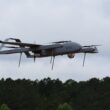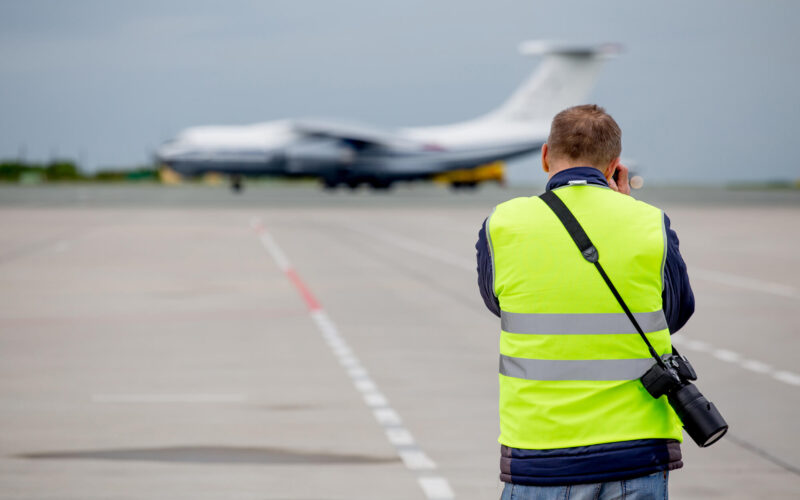When we think about risk-taking hobbies, the recreational activity of plane spotting might not immediately spring to mind. But believe it or not, the seemingly innocent act of taking photographs of planes has landed more than a few aviation enthusiasts in hot water.
You don’t need to look too hard to find stories like this, all involving seemingly unaware hobbyists accused of serious offences in foreign countries.
Aviation enthusiasts in hot water
In 2016, four British planespotters were arrested in Kenya on suspicion of terrorism offences after being caught taking photos from an airport bar during a two-week plane spotting trip to Africa. They spent two days being interrogated by anti-terror specialists and were eventually charged with trespassing and using a mobile phone app to monitor flights.
The group, who have previously pursued their hobby in America, Russia, China and across Europe, had already visited Kenya’s largest airport, Jomo Kenyatta International, but took a taxi to Wilson Airport, which arose suspicion from police. This is where the group were arrested. Eventually, the men were ordered to pay £1,400 or serve a year in jail.
Similarly, back in 2001, 11 British and two Dutch plane-spotters were convicted in Greece of legally obtaining state secrets. Initially, the group faced a felony charge of espionage after they were arrested near a military base at Kalamata. Six of the Britons and two Dutch men were found guilty of spying and given three-year jail sentences, but these were eventually overturned. Five other Britons were found guilty of aiding and abetting and were given one-year suspended sentences. At the time a twelfth plane-spotter, who was unable to attend the appeal for health reasons, remained convicted of aiding and abetting because he did not attend the appeal.
During the appeal hearing, a member of the defence team said that plane-spotting was not understood. He added: “We are lucky in Greece; we do not have this as a hobby. Here we have the sun.” Ouch!
But what are the reasons behind these arrests?
Well, in most cases it is argued that information obtained by planespotters is classified and could harm national security. While plane-spotting is (mostly) legal, there are many countries where it is considered a suspicious activity. In 2010, two men were arrested in India after asking for a hotel room overlooking a civilian runway.
This, coupled with a rise in serious terrorist incidences surrounding aviation in more recent decades, and it’s easy to see why planespotters could be viewed with mistrust by airport officials, security guards, police and even civilians.
So, it’s clear that, if you’re hoping to grab a pair of binoculars and hunt for some lesser-spotted aircraft, there are several important factors to bear in mind.
Here, AeroTime investigates the dos and don’ts of plane spotting.
Do your research
When planning a plane spotting trip, you might be more concerned with buying the right type of binoculars or downloading the latest flight tracking app, but, if you’re preparing to take your hobby abroad, it’s also imperative to extend that detailed research to the country you intend to visit.
Conducting thorough research, following guidelines, being mindful of terrorism laws (under certain laws, some plane spotting activities are considered suspicious) and respecting the culture is not only imperative to keeping yourself and others safe, but also just good practice.
But if you’re a seasoned globe-trotting plane-spotter, don’t assume that you know what you’re allowed to do
As we can see from the news stories above, many people arrested for crimes related to plane spotting activities had been photographing planes several years prior to the incident and had even travelled the world doing so. But it is important to remember that each country has its own laws and a varying understanding of plane spotting. When we think about it, the act of creeping around airbases with cameras and writing down numbers would look incredibly suspicious to a nation that is unfamiliar with the pastime.
Britain is rife with aviation enthusiasts, and it is considered a popular, if a little eccentric, pastime. However, somewhere like Greece, where it is not commonplace, may find the activity suspicious and even dangerous.
And while Dubai International Airport might be a planespotter’s paradise, you could be breaking the law by taking a snap of aircraft – even the one you’ve just alighted. Although plane spotting is not illegal in the United Arab Emirates, it is not understood and viewed with disapproval by the authorities.
Back in 2015, three British plane spotters were thrown in jail in the UAE and warned that they faced life in prison, or even the death penalty, for alleged espionage after they were spotted writing down aircraft registration numbers near Fujairah Airport, about 80 miles from Dubai. After a legal battle, and eight weeks in prison, the men were released.
It is also important to carry an ID card or passport.
Do seek approval from airport officials – and heed their warnings!
While bureaucracy may take away some of the sheen from your exciting new hobby, it’s important to gain the appropriate permissions from the relevant authorities.
In most countries, you will find similar laws and regulations, which address the issue of entering or photographing restricted areas. After all, we’re living at a time where it’s imperative to be cautious and assist the authorities when it comes to matters of public safety. So, if videos and photos are taken without permission, and deemed to be for the wrong purpose or in a restricted area, you could find yourself answering to the authorities. It’s likely that the police or airport authorities will want to know what you’re up to – and they might not like it. So, if asked to move on, just do it.
According to website Flight Radar, this is perhaps “the best way to get into the airplane spotting world and serves two purposes”. The article continues: “You’ll get to learn more about the aviation industry from someone directly involved. You can find out more about the tricks of the trade and how an airport operates on a day-to-day basis.” It also keeps you safe.
Don’t trespass at airports or on private property, and never try to breach the security perimeter at an airport or airfield
While this piece of advice should seem glaringly obvious, it’s also probably the most important. Just don’t do it. If you’re caught, the consequences could be dire. Not to mention that it’s pretty reckless!
Do figure out where you are permitted to take aircraft photos
As the old saying goes, ‘preparation is key’ and, when it comes to planning your plane spotting trip, it certainly pays to be well-primed. This is most important when it comes to figuring out where you can and cannot take aircraft photos.
According to KN Aviation, a website run by writer and aviation enthusiast, Keishi Nukina, there are only a certain number of areas where you are permitted to take photos of aircraft. Firstly, inside the terminal’s secure area. However, this option is limited (not to mention a bit pricey) as you can only access this area when you are taking a flight out of the airport. You’re also limited to taking snaps through the window area, which is not ideal.
Next up, you can take photographs from inside the terminal’s public area. Some airports even have open-air observation decks. Others, you can take images from places like food courts where aircraft can be viewed via windows.
However, if you have sought permission from airport official, you may be granted permission to access inside the airport’s perimeter. Nukina states that certain airports like Zurich and Prague offer photo tours that give access to areas around runways and taxiways. This is also possible during air shows and similar events.
Lastly, Nukina states that it is possible to be permitted to take images around the airport’s perimeter, either standing near the approach path or by the fence.
There are also dozens of excellent websites dedicated to helping spotters find the perfect location for the best photos at any time of the day. In addition, many major airports around the world offer observation decks, terraces and parks which offer easy, safe airliner spotting.
Do try and be helpful
Plane spotting can also be useful to airport officials. So, if you notice anything that you believe should be flagged with those in charge, then don’t hesitate to do so. This can be information such as birds nesting or animals breeding near the airport, which can be hazardous.
Lastly, do alert airport officials if you notice strange activities or security breaches
UK-based aviation enthusiasts’ club LAAS International has even included a code of conduct for aircraft spotters, which encourages members to report any suspicious behavior.
So, now you know what you can and can’t do, keep an eye out for our upcoming article chockfull of advice for novice planespotters.









